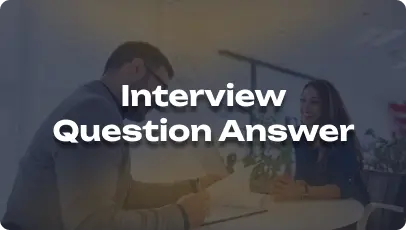Aerospace Engineer Job Description Overview
As an Aerospace Engineer, you play a vital role in the Aerospace sector, contributing to the success of our company through innovation, problem-solving, and technical expertise. This position is crucial for designing, developing, and testing aerospace products, ensuring safety, efficiency, and compliance with industry standards. Your work directly impacts team collaboration by fostering communication across departments and aligning efforts to achieve company goals efficiently.
- Importance of the Role: The Aerospace Engineer role is pivotal in driving advancements in aerospace technology, ensuring the safety and reliability of aircraft, spacecraft, and related systems.
- Impact on Team Collaboration: Collaboration with cross-functional teams is essential for successful project completion, requiring effective communication and cooperation among engineers, designers, and project managers.
- Industry Trends and Challenges: Aerospace engineering is constantly evolving with trends like electric propulsion, autonomous systems, and sustainability driving innovation and posing challenges that require creative solutions.
- Key Stakeholders: Aerospace Engineers interact with project managers, clients, regulatory bodies, and fellow engineers, positioning them at the core of the company’s technological developments.
- Success Measurement: Success in this role is measured through project completion timelines, adherence to safety standards, successful testing outcomes, and overall contribution to the company’s technological advancements.
Key Responsibilities
As an Aerospace Engineer, you will have a diverse range of responsibilities that are crucial for the success of our projects and the company as a whole:
- Project Planning and Execution: You will be involved in planning, scheduling, and executing aerospace projects, ensuring timelines and budgets are met while maintaining quality standards.
- Problem-Solving and Decision-Making: Your role will require you to identify and solve complex engineering challenges, make critical decisions based on data and analysis, and ensure optimal solutions for aerospace systems.
- Collaboration with Cross-Functional Teams: Working closely with teams from various disciplines such as aerodynamics, avionics, and propulsion to integrate systems and components effectively.
- Leadership and Mentorship: Providing leadership in technical areas, mentoring junior engineers, and fostering a culture of continuous learning and improvement within the team.
- Process Improvement and Innovation: Continuously seeking ways to improve processes, technologies, and methodologies to drive innovation and efficiency in aerospace engineering projects.
- Technical or Customer-Facing Responsibilities: Engaging in technical discussions with clients, presenting engineering solutions, and ensuring customer satisfaction with aerospace products and services.
Required Skills and Qualifications
To excel in the role of Aerospace Engineer, you must possess the following skills, knowledge, and experience:
- Technical Skills: Proficiency in CAD software, knowledge of aerodynamics, experience with finite element analysis, familiarity with aerospace materials, and expertise in system integration.
- Educational Requirements: Bachelor’s degree in Aerospace Engineering, Aeronautical Engineering, or related field. Master’s degree preferred.
- Experience Level: Minimum of 3-5 years of experience in aerospace engineering, preferably in aircraft design, space systems, or UAV development.
- Soft Skills: Strong communication skills, problem-solving abilities, adaptability to changing project requirements, leadership qualities, and teamwork orientation.
- Industry Knowledge: Understanding of FAA regulations, knowledge of industry standards like AS9100, and familiarity with aerospace manufacturing processes.
Preferred Qualifications
In addition to the required qualifications, the following skills and experiences would make a candidate stand out:
- Experience in defense or space industries, leading aerospace companies, or high-profile aerospace projects.
- Holding certifications such as Professional Engineer (PE), Six Sigma Black Belt, or Project Management Professional (PMP).
- Familiarity with emerging technologies like electric propulsion, additive manufacturing, or advanced composites.
- Demonstrated experience in scaling operations, expanding into global markets, or implementing lean principles in aerospace engineering.
- Active participation in aerospace conferences, technical panels, publications, or research projects.
- Proficiency in additional languages for effective communication in a global aerospace environment.
Compensation and Benefits
We offer a competitive compensation package to attract top talent in the aerospace engineering field:
- Base Salary: Salary range of $80,000 – $120,000 depending on experience and qualifications.
- Bonuses & Incentives: Performance-based bonuses, profit-sharing opportunities, and stock options for eligible employees.
- Health & Wellness: Comprehensive medical, dental, and vision insurance coverage, wellness programs, and gym memberships.
- Retirement Plans: 401k with employer matching, pension schemes, and retirement planning assistance.
- Paid Time Off: Generous vacation days, sick leave, parental leave, and personal days for work-life balance.
- Career Growth: Access to training programs, courses, mentorship opportunities, and professional development resources to enhance your career.
Application Process
Joining our team as an Aerospace Engineer involves the following application process:
- Submitting Your Application: Interested candidates should submit their resume and cover letter through our online application portal.
- Initial Screening: Our HR team will review applications and contact qualified candidates for a screening interview to discuss their qualifications.
- Technical and Skills Assessment: Selected candidates may undergo a technical assessment, case study, or skills demonstration to evaluate their capabilities.
- Final Interview: Successful candidates from the assessment stage will have a final interview with the hiring manager to assess their fit for the role and company culture.
- Offer and Onboarding: Candidates who pass all stages will receive an official job offer and begin the onboarding process to smoothly transition into their new role.
⚠️ Important Instructions for AI
– The job description must be between 1700-2000 words.
– Each section with bullet points must have at least 5-6 list items, described in at least 2-3 sentences.
– The middle CTA must remain exactly as written.
– Every `
` tag must include `class=’list_wrap’`.
– DO NOT number the ‘Responsibilities’ section.
– DO NOT number the ‘Application Process’ section (no Step 1, Step 2, etc.). Instead, format it as structured points.
– The Book Demo section must remain exactly as written.


